Experimental Investigation on Heat Transfer and Pressure Drop of Supercritical Carbon Dioxide in a Mini Vertical Upward Flow
Abstract
:1. Introduction
2. Experimental Setup and Method
3. Results and Discussion
3.1. Classification of Flow Region
3.2. Typical Heat Transfer Characteristics
3.3. Effect of Mass Flux on Heat Transfer and Pressure Drop
3.4. Effect of Inlet Pressure on Heat Transfer and Pressure Drop
3.5. Heat Transfer Characteristics along the Heating Length
3.6. Buoyancy Forces and Flow Acceleration Effects of Supercritical Fluids
3.7. A New Correlation of Heat Transfer and Friction Factor
4. Conclusions
- (1)
- There is an effect of pressure, mass flux, and heat flux on the heat transfer and pressure drop of supercritical carbon dioxide for vertical upward flow. There is a peak of heat transfer coefficient when the wall and bulk fluid temperatures are distributed on either side of the pseudocritical temperature.
- (2)
- Based on the criteria of Jackson’s buoyancy and McEligot’s acceleration, the influence of buoyancy force on heat transfer can be neglected, while the flow thermal acceleration effect should be taken into account for the mini vertical upward flow of supercritical carbon dioxide.
- (3)
- By considering the effect of flow acceleration, the dimensionless parameter () was introduced into the modified Jackson’s correlation for mini supercritical carbon dioxide. The predictive accuracy of the new heat transfer correlation is about 73.9% of experimental data within a ±10% error band.
- (4)
- Based on the correlation of Filonenko, the new semi-empirical correlation of the friction factor was proposed by taking account of the variation in density and viscosity. The fitted correlation shows good enough accuracy for predicting the friction factor for supercritical carbon dioxide.
Author Contributions
Funding
Institutional Review Board Statement
Informed Consent Statement
Data Availability Statement
Conflicts of Interest
Nomenclature
| Re | Reynolds number, |
| Specific heat, kJ·kg−1·K−1 | |
| Average specific heat, kJ·kg−1·K−1, | |
| d | Diameter, m |
| G | Mass flux, kg·m−2·s−1 |
| H | Enthalpy, J·kg−1 |
| h | Heat transfer coefficient, kW·m−2·K−1 |
| P | Pressure, MPa |
| Pcrit | Critical Pressure, MPa |
| qn | Inner wall heat flux, kW·m−2 |
| dimensionless heat flux | |
| T | Temperature, K |
| x | The length of location, m |
| Bo* | Buoyancy effect numbers |
| Gr | Grashof numbers |
| Pr | Prandtl number, |
| Averaged Prandtl numbers, | |
| Nu | Nusselt number, |
| Greek symbols | |
| Thermal expansion coefficient (K−1) | |
| Density, kg·m−3 | |
| Thermal conductivity, W·m−1 K−1 | |
| Dynamic viscosity (Pa·s) | |
| Subscripts | |
| b | Bulk |
| i, o | inner, outer |
| pc | Pseudocritical |
| w, wi | Wall, Inner wall |
| exp | Experimental |
| cal | Calculated based on the correlation. |
| AE | Average Error, |
| MAE | Mean Average Error, |
| RMSE | Root Mean Square Error, |
| Filo | Filonenko |
References
- Crespi, F.; Gavagnin, G.; Sánchez, D.; Martínez, G.S. Supercritical carbon dioxide cycles for power generation: A review. Appl. Energy 2017, 195, 152–183. [Google Scholar] [CrossRef]
- Aakre, S.R.; Anderson, M.H. Pressure drop and heat transfer characteristics of nitrate salt and supercritical CO2 in a diffusion-bonded heat exchanger. Int. J. Heat Mass Transf. 2022, 189, 122691. [Google Scholar] [CrossRef]
- Dostal, V.; Hejzlar, P.; Driscoll, M.J. High-Performance Supercritical Carbon Dioxide Cycle for Next-Generation Nuclear Reactors. Nucl. Technol. 2006, 154, 265–282. [Google Scholar] [CrossRef]
- Wang, Q.; Liu, C.; Luo, R.; Li, D.; Macián-Juan, R. Thermodynamic analysis and optimization of the combined supercritical carbon dioxide Brayton cycle and organic Rankine cycle-based nuclear hydrogen production system. Int. J. Energy Res. 2022, 46, 832–859. [Google Scholar] [CrossRef]
- Vitali, M.; Corvaro, F.; Marchetti, B.; Terenzi, A. Thermodynamic challenges for CO2 pipelines design: A critical review on the effects of impurities, water content, and low temperature. Int. J. Greenh. Gas Control 2022, 114, 103605. [Google Scholar] [CrossRef]
- Samara, H.; Al-Eryani, M.; Jaeger, P. The role of supercritical carbon dioxide in modifying the phase and interfacial properties of multiphase systems relevant to combined EOR-CCS. Fuel 2022, 323, 124271. [Google Scholar] [CrossRef]
- Bieniek, A.; Kuchmacz, J.; Sztekler, K.; Mika, L.; Radomska, E. A New Method of Regulating the Cooling Capacity of a Cooling System with CO2. Energies 2021, 14, 1922. [Google Scholar] [CrossRef]
- Xu, T.; Zhao, H.; Wang, M.; Qi, J. Numerical Study of Thermal-Hydraulic Performance of a New Spiral Z-Type PCHE for Supercritical CO2 Brayton Cycle. Energies 2021, 14, 4417. [Google Scholar] [CrossRef]
- Ji, Y.; Wang, Z.; Wang, M.; Liu, Y.; Xu, H.; Zhu, P.; Ma, S.; Yang, Z.; Xiao, G. Experimental and Numerical Study on Thermal Hydraulic Performance of Trapezoidal Printed Circuit Heat Exchanger for Supercritical CO2 Brayton Cycle. Energies 2022, 15, 4940. [Google Scholar] [CrossRef]
- Kim, D.E.; Kim, M.H. Experimental study of the effects of flow acceleration and buoyancy on heat transfer in a supercritical fluid flow in a circular tube. Nucl. Eng. Des. 2010, 240, 3336–3349. [Google Scholar] [CrossRef]
- Liu, S.; Huang, Y.; Liu, G.; Wang, J.; Leung, L.K. Improvement of buoyancy and acceleration parameters for forced and mixed convective heat transfer to supercritical fluids flowing in vertical tubes. Int. J. Heat Mass Transf. 2017, 106, 1144–1156. [Google Scholar] [CrossRef]
- Jajja, S.A.; Sequeira, J.M.; Fronk, B.M. Geometry and orientation effects in non-uniformly heated microchannel heat exchangers using supercritical carbon dioxide. Exp. Therm. Fluid Sci. 2020, 112, 109979. [Google Scholar] [CrossRef]
- McEligot, D.M.; Jackson, J.D. “Deterioration” criteria for convective heat transfer in gas flow through non-circular ducts. Nucl. Eng. Des. 2004, 232, 327–333. [Google Scholar] [CrossRef]
- Jackson, J. Models of heat transfer to fluids at supercritical pressure with influences of buoyancy and acceleration. Appl. Therm. Eng. 2017, 124, 1481–1491. [Google Scholar] [CrossRef]
- Cai, C.; Wang, X.; Mao, S.; Kang, Y.; Lu, Y.; Han, X.; Liu, W. Heat Transfer Characteristics and Prediction Model of Supercritical Carbon Dioxide (SC-CO2) in a Vertical Tube. Energies 2017, 10, 1870. [Google Scholar] [CrossRef] [Green Version]
- Huang, D.; Li, W. A brief review on the buoyancy criteria for supercritical fluids. Appl. Therm. Eng. 2018, 131, 977–987. [Google Scholar] [CrossRef]
- Lv, H.; Bi, Q.; Chen, G.; Zhang, Y.; Deng, L. Experimental study on heat transfer in vertical cooling tube cooled by downward flow in the passive heat removal system of SCWR. Appl. Therm. Eng. 2020, 179, 115680. [Google Scholar] [CrossRef]
- Lv, H.; Bi, Q.; Dong, X.; Zhang, Z.; Zhu, G. Investigation on heat transfer of in-tube supercritical water cooling accompanying out-tube pool boiling. Int. J. Heat Mass Transf. 2019, 136, 938–949. [Google Scholar] [CrossRef]
- Bruch, A.; Bontemps, A.; Colasson, S. Experimental investigation of heat transfer of supercritical carbon dioxide flowing in a cooled vertical tube. Int. J. Heat Mass Transf. 2009, 52, 2589–2598. [Google Scholar] [CrossRef]
- Lei, Y.; Xu, B.; Chen, Z. Experimental investigation on cooling heat transfer and buoyancy effect of supercritical carbon dioxide in horizontal and vertical micro-channels. Int. J. Heat Mass Transf. 2021, 181, 121792. [Google Scholar] [CrossRef]
- Zhang, H.; Xu, J.; Wang, Q.; Zhu, X. Multiple wall temperature peaks during forced convective heat transfer of supercritical carbon dioxide in tubes. Int. J. Heat Mass Transf. 2021, 172, 121171. [Google Scholar] [CrossRef]
- Park, J.H.; Kim, M.H. Modeling of local heat transfer on supercritical pressure CO2 in horizontal semicircular tube. Int. J. Heat Mass Transf. 2022, 184, 122197. [Google Scholar] [CrossRef]
- Chai, L.; Tsamos, K.M.; Tassou, S.A. Modelling and Evaluation of the Thermohydraulic Performance of Finned-Tube Supercritical Carbon Dioxide Gas Coolers. Energies 2020, 13, 1031. [Google Scholar] [CrossRef] [Green Version]
- Liao, S.M.; Zhao, T.S. An experimental investigation of convection heat transfer to supercritical carbon dioxide in miniature tubes. Int. J. Heat Mass Transf. 2002, 45, 5025–5034. [Google Scholar] [CrossRef]
- Kurganov, V.A.; Zeigarnik, Y.A.; Maslakova, I.V. Heat transfer and hydraulic resistance of supercritical pressure coolants. Part III: Generalized description of SCP fluids normal heat transfer, empirical calculating correlations, integral method of theoretical calculations. Int. J. Heat Mass Transf. 2013, 67, 535–547. [Google Scholar] [CrossRef]
- Kurganov, V.A.; Zeigarnik, Y.A.; Maslakova, I.V. Heat transfer and hydraulic resistance of supercritical pressure coolants. Part IV: Problems of generalized heat transfer description, methods of predicting deteriorated heat transfer; empirical correlations; deteriorated heat transfer enhancement; dissolved gas effects. Int. J. Heat Mass Transf. 2014, 77, 1197–1212. [Google Scholar] [CrossRef]
- Guo, P.; Liu, S.; Yan, J.; Wang, J.; Zhang, Q. Experimental study on heat transfer of supercritical CO2 flowing in a mini tube under heating conditions. Int. J. Heat Mass Transf. 2020, 153, 119623. [Google Scholar] [CrossRef]
- Li, Z.-H.; Jiang, P.-X.; Zhao, C.-R.; Zhang, Y. Experimental investigation of convection heat transfer of CO2 at supercritical pressures in a vertical circular tube. Exp. Therm. Fluid Sci. 2010, 34, 1162–1171. [Google Scholar] [CrossRef]
- Lei, X.; Zhang, J.; Gou, L.; Zhang, Q.; Li, H. Experimental study on convection heat transfer of supercritical CO2 in small upward channels. Energy 2019, 176, 119–130. [Google Scholar] [CrossRef]
- Wang, H.; Bi, Q.; Wu, G.; Yang, Z. Experimental investigation on pressure drop of supercritical water in an annular channel. J. Supercrit. Fluids 2018, 131, 47–57. [Google Scholar] [CrossRef]
- Wang, Z.; Xiao, G.; Liu, Y.; Ji, Y.; Xu, H. Reference temperature correction and dimensionless number analysis for heat transfer of supercritical CO2 in horizontal tubes. Int. J. Heat Mass Transf. 2022, 194, 122973. [Google Scholar] [CrossRef]
- Li, H.; Kruizenga, A.; Anderson, M.; Corradini, M.; Luo, Y.; Wang, H.; Li, H. Development of a new forced convection heat transfer correlation for CO2 in both heating and cooling modes at supercritical pressures. Int. J. Therm. Sci. 2011, 50, 2430–2442. [Google Scholar] [CrossRef]
- Fang, X.; Xu, Y. Modified heat transfer equation for in-tube supercritical CO2 cooling. Appl. Therm. Eng. 2011, 31, 3036–3042. [Google Scholar] [CrossRef]
- Bae, Y.-Y.; Kim, H.-Y. Convective heat transfer to CO2 at a supercritical pressure flowing vertically upward in tubes and an annular channel. Exp. Therm. Fluid Sci. 2009, 33, 329–339. [Google Scholar] [CrossRef]
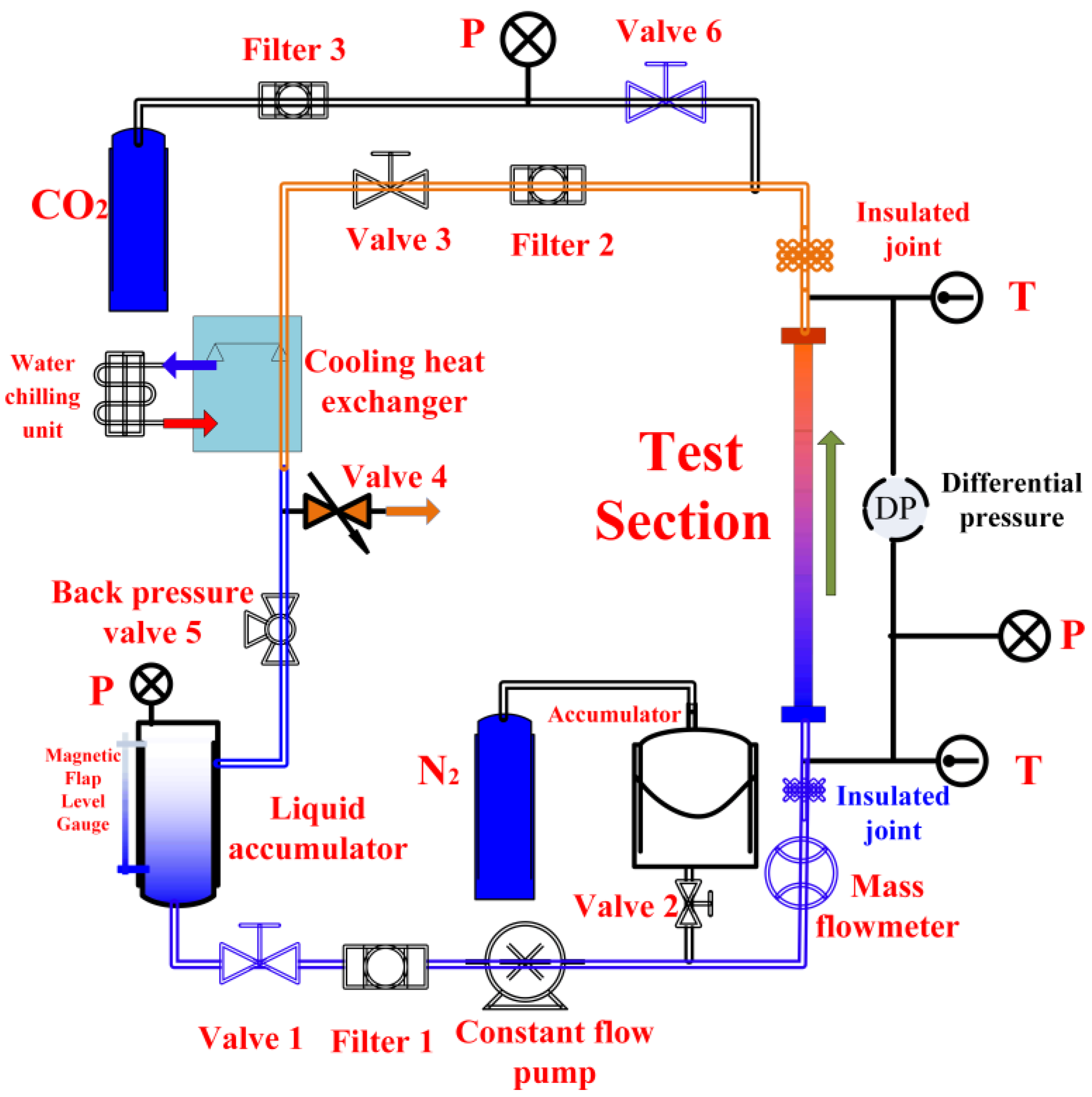


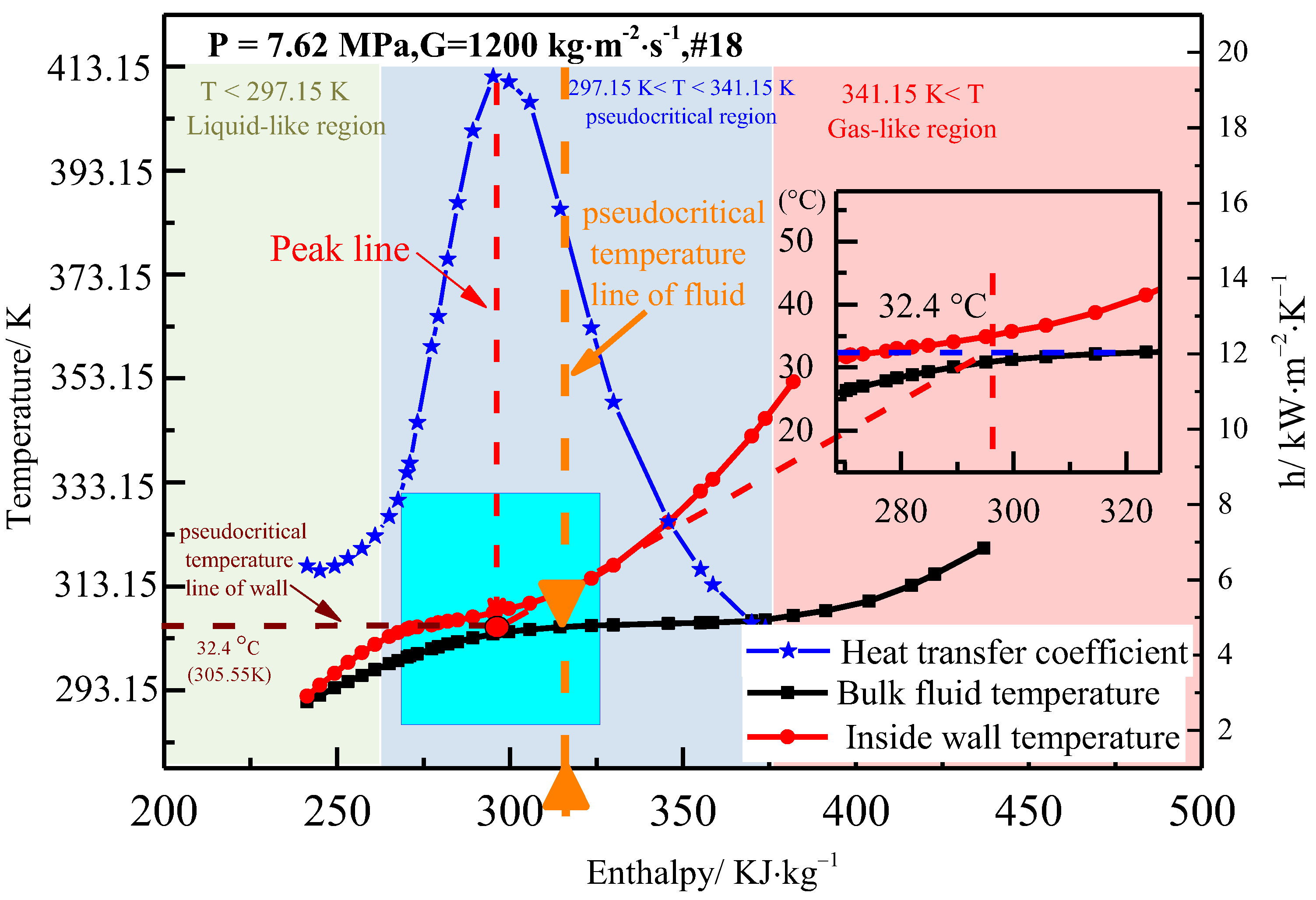
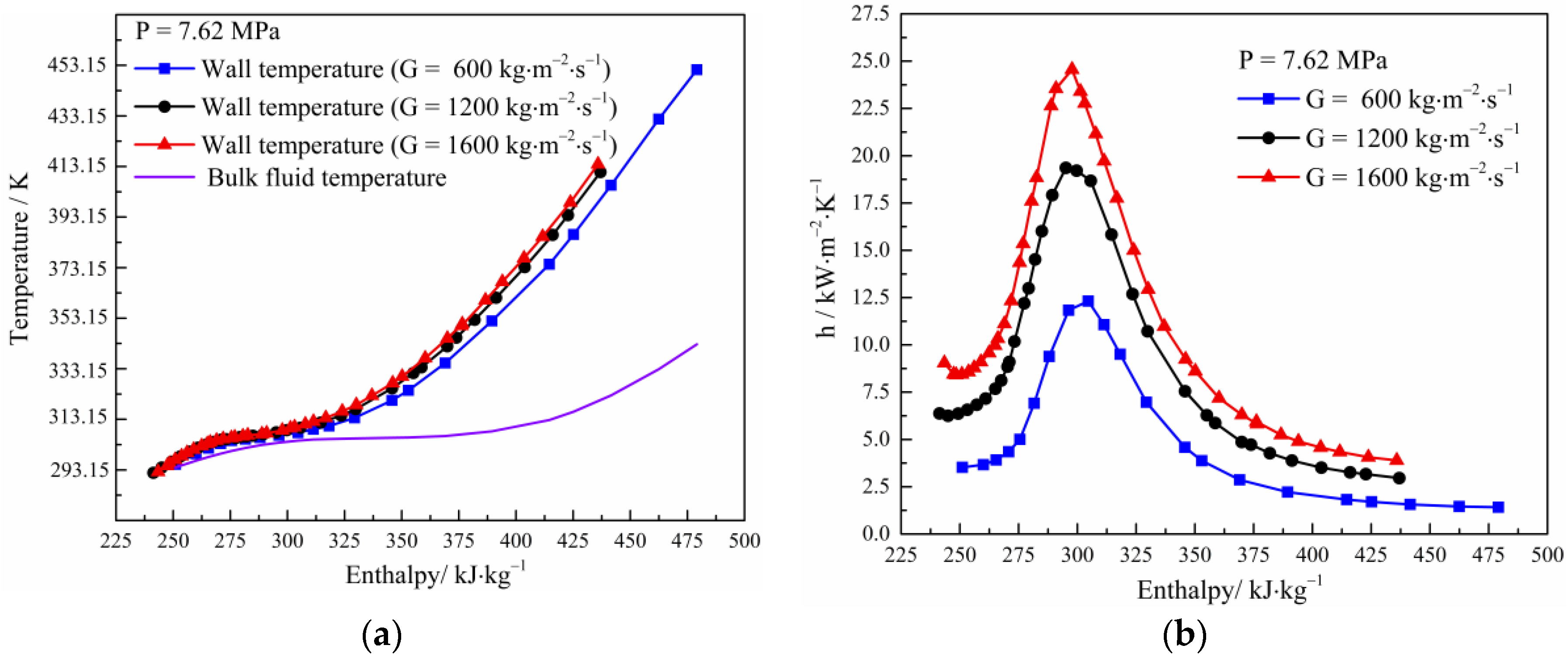
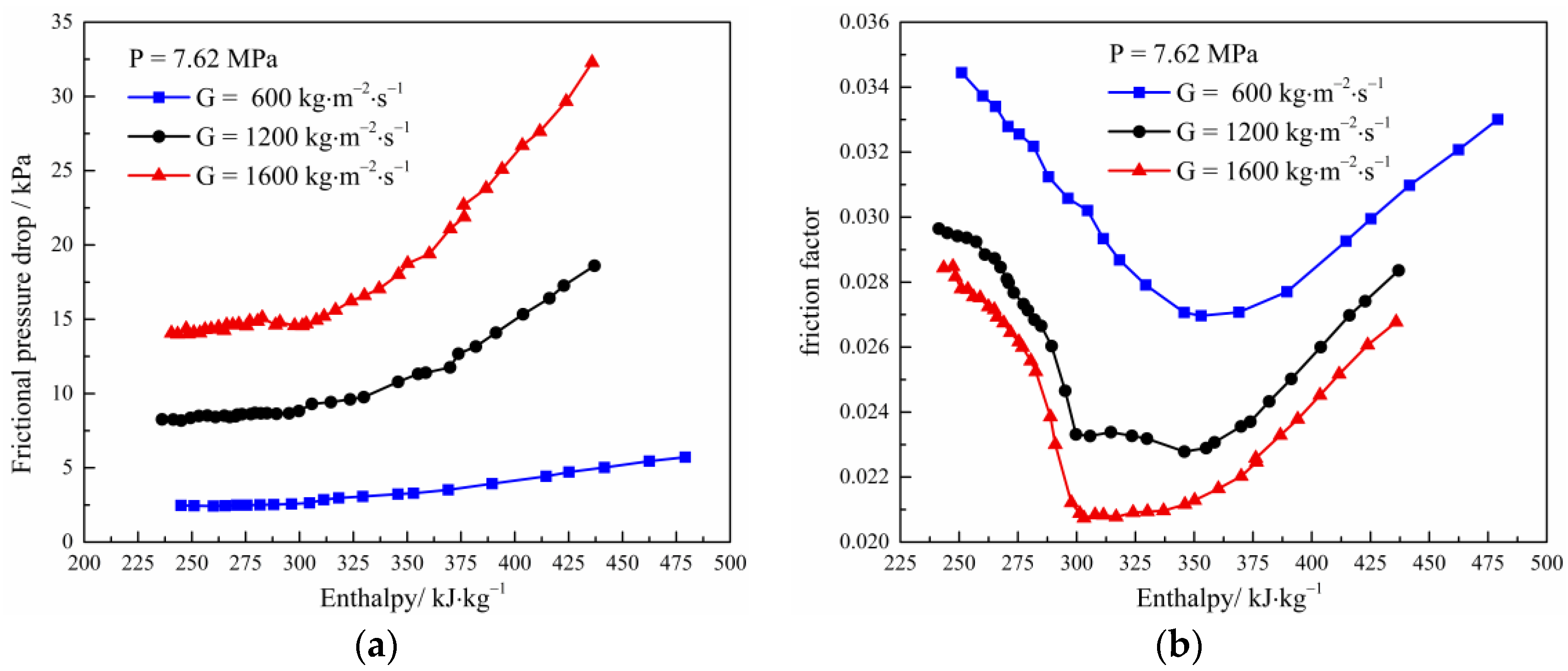
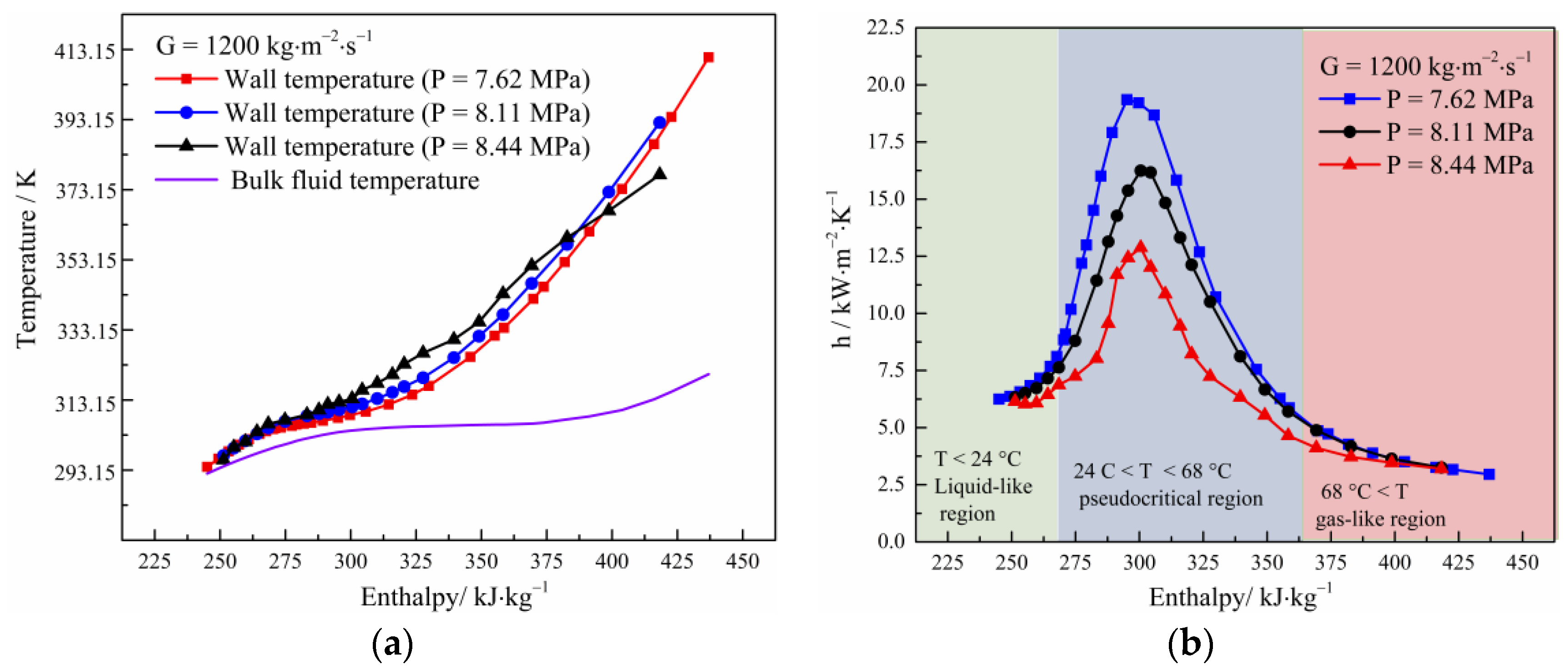


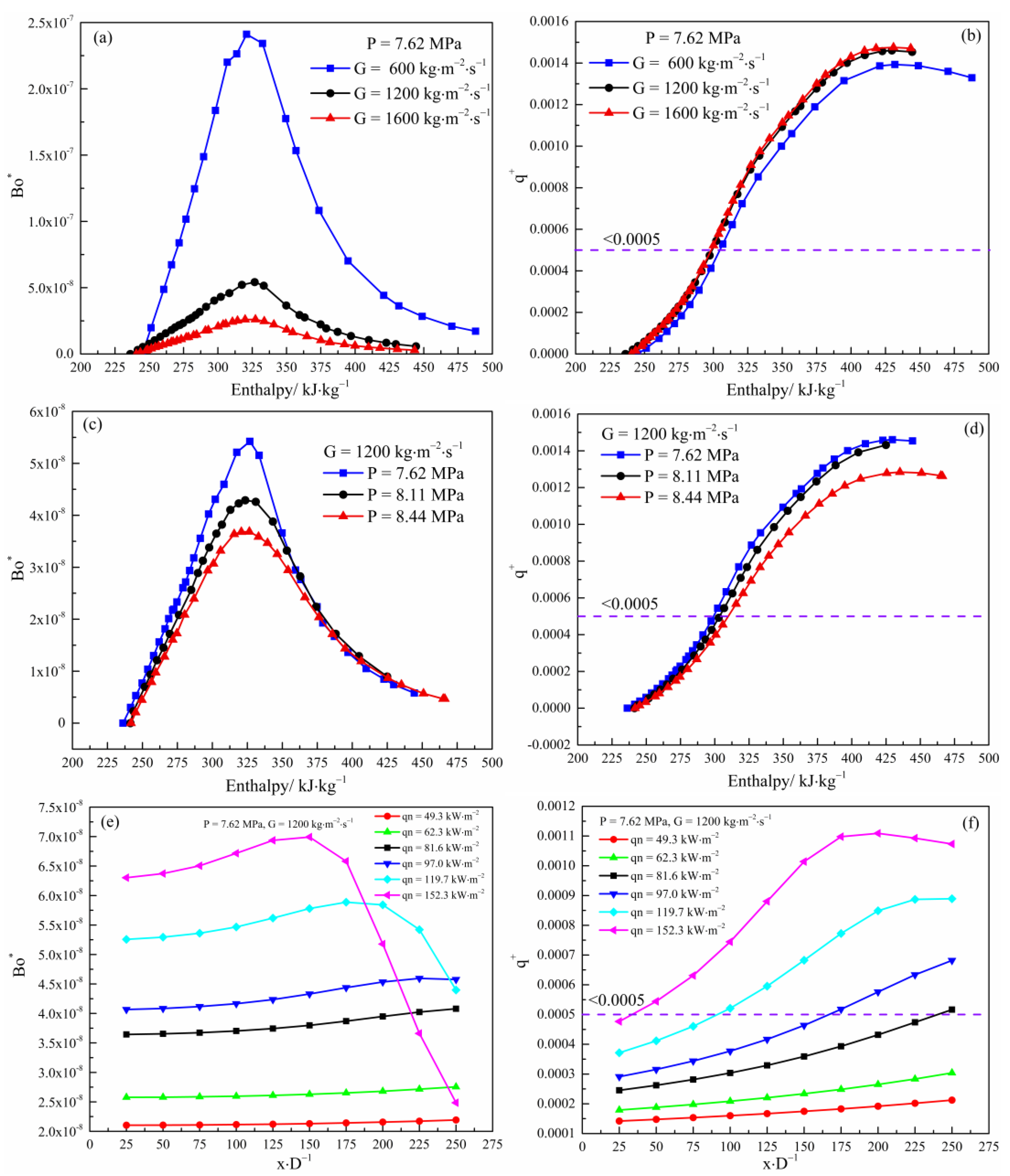

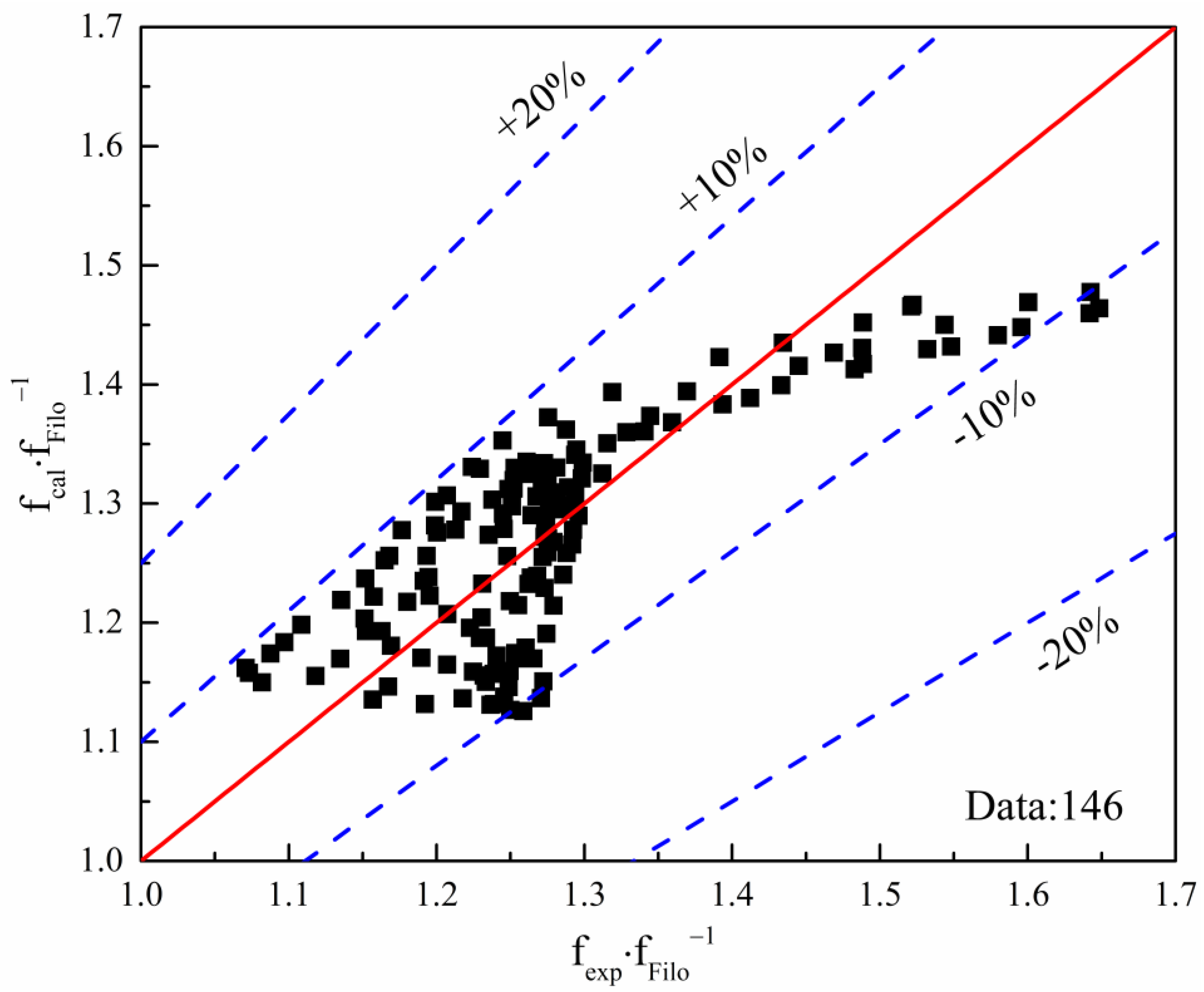
| Pressure (Pseudocritical Point) | Mass Flux kg·m−2·s−1 | Heat Flux kW·m−2 |
|---|---|---|
| 7.4 MPa (30.25 °C) | 1200 | 0–319 |
| 7.62 MPa (32.3 °C) | 600 | 0–319 |
| 1200 | 0–319 | |
| 1600 | 0–319 | |
| 8.1 MPa (35.25 °C) | 1200 | 0–319 |
| 8.44 MPa (37 °C) | 1200 | 0–319 |
Publisher’s Note: MDPI stays neutral with regard to jurisdictional claims in published maps and institutional affiliations. |
© 2022 by the authors. Licensee MDPI, Basel, Switzerland. This article is an open access article distributed under the terms and conditions of the Creative Commons Attribution (CC BY) license (https://creativecommons.org/licenses/by/4.0/).
Share and Cite
Lyu, H.; Wang, H.; Bi, Q.; Niu, F. Experimental Investigation on Heat Transfer and Pressure Drop of Supercritical Carbon Dioxide in a Mini Vertical Upward Flow. Energies 2022, 15, 6135. https://doi.org/10.3390/en15176135
Lyu H, Wang H, Bi Q, Niu F. Experimental Investigation on Heat Transfer and Pressure Drop of Supercritical Carbon Dioxide in a Mini Vertical Upward Flow. Energies. 2022; 15(17):6135. https://doi.org/10.3390/en15176135
Chicago/Turabian StyleLyu, Haicai, Han Wang, Qincheng Bi, and Fenglei Niu. 2022. "Experimental Investigation on Heat Transfer and Pressure Drop of Supercritical Carbon Dioxide in a Mini Vertical Upward Flow" Energies 15, no. 17: 6135. https://doi.org/10.3390/en15176135






